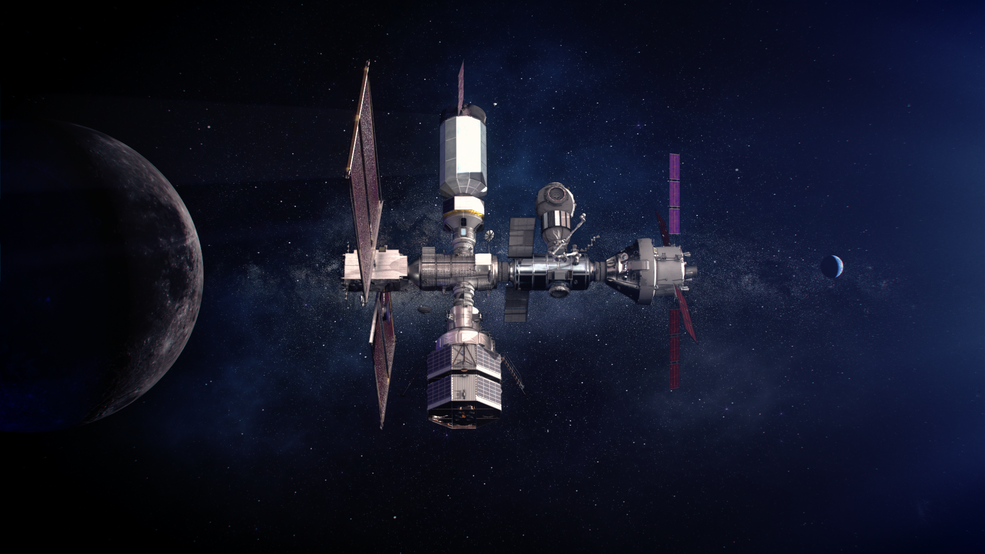In recent years, space exploration has moved beyond the purely governmental sphere, opening the door to the commercialization of space, while the large space agencies advance, or at least try to advance, towards the ambitious goals of reaching Mars and establishing lunar bases on the coming decades.
After exploring the Earth's orbit and with the end of the use of the international space station just around the corner, it is time to begin, in a concise way, the human exploration of the Solar System. We will not see, in the coming years, manned missions to the outer planets, but the plans for the permanence of the Moon are there, with the Program Artemis and Gateway, in an international collaboration similar to the one that led to the creation of the ISS.
with the missions Artemis, NASA aims to bring the first woman and the next man to the lunar surface in 2024. The program plans to use innovative technologies to explore the surface of our natural satellite, in collaboration with commercial and international partners.
Establishing sustainable exploration until the end of the decade, the aim is to open the doors to the next step, which will be the manned exploration of Mars.
The station Gateway is a vital part of NASA's deep space exploration plans, along with the rocket Space launch system (SLS), with the manned space vehicle Orion, and the landing system that will send astronauts to the Moon.
By acquiring new experiences on and around the Moon, it will prepare the US space agency and other agencies to send the first humans to Mars in the coming years.
A Gateway will play a vital role in this process. The lunar-orbiting station will be a destination for astronauts and scientific investigations, as well as a port for deep space exploration, such as vehicles bound for the lunar surface or vehicles traveling to destinations other than the Moon.
For its part, Russia continues pinch (made with three fingers) in Earth orbit and its future plans are uncertain, orbiting between the manned exploration of the Moon and the construction of a new space station.
However, and with serious problems of financing space exploration, it is not expected that it will advance independently, and there may be an association with international space exploration programs.
However, studies continue for the development of a partially reusable space capsule, the Hoursl, and new launch vectors such as the rocket Soyuz-5, preparing to release new modules for the ISS.
India is also preparing a manned space program, the Gaganyaan, which intends to develop a space capsule with a capacity of two or three crew members and that can remain in orbit for seven days.
As the United States and its partners take steps towards the Moon, China begins construction of its modular orbital station, the Tiangong, having also started studies for manned trips to the Moon.
With preparations underway in Wenchang, the first module of the Chinese space station Tiangong: Tianhe-1, will be put into orbit in March or April 2021, by the second rocket Chang Zheng-5B.
With a mass of about 20.000 kilograms, the module will be placed in an orbit with an average altitude of 393 kilometers and will serve as the core of the space station. Tiangong.
The modules wentian e Meng Tian they will be scientific modules with a mass of about 20.000 kilos and will be used to carry out experiments in the areas of life sciences, biotechnology, physics, materials sciences, microgravity, etc. Another experimental module, the Xuntian, will be a space telescope with a mirror two meters in diameter.
After module release Tianhe-1, China will launch the cargo vehicle Tianzhou-2 in April and that it will couple with the Tianhe-1 automatically.
The manned space capsule shenzhou-12 will then be launched by the rocket Chang Zheng-2F/G, from the Jiuquan Satellite Launch Center for a multi-month mission in orbit aboard the new space station. The launch of shenzhou-12 is scheduled for June and will carry three crew members.
On the other hand, several missions are lining up on the cosmic horizon to capture our attention, such as the launch of the space telescope James Webb, which will search for the first galaxies that formed after the Big Bang, or the JUICE mission (Jupiter Icy Moons Explorer) from ESA, which will get more information about Jupiter and its large moons.
Still the new missions arrive to Mars: the tianwen-1 (China), the March 2020 Preseverance (USA) and the Al-Amal (United Arab Emirates), will certainly open new chapters of exploration of the red planet.
Finally, the new space race led by private companies, such as the Blue Origin, Virgin Galactic and SpaceX, in an attempt to open up access to space to 'ordinary' citizens.
Author – Rui Barbosa was born in May 1971 and graduated in Applied Physics. From an early age, Rui Barbosa became interested in the spatial theme.
On May 3, 2001 starts the Orbit Bulletina, dedicated to Astronautics and the Conquest of Space, which celebrates its 20th anniversary.
Currently, Rui Barbosa shares his passion for the Conquest of Space with mountain activities.
Help us to do the Sul Informação!
Contribute your donation so that we can continue to make your journal!
Click here to support us (Paypal)
Or use our IBAN PT50 0018 0003 38929600020 44




















Comments